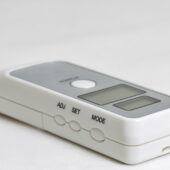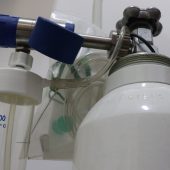Home blood pressure monitors need to be calibrated regularly (every 6 months to two years) to stay accurate.
You’ll know your blood pressure monitor is out of whack when it displays different readings from those you get at your doctor’s office or it displays inconsistent readings.
Depending on the type of blood pressure monitor you have, you can calibrate it yourself at home or send it to the manufacturer or a lab for professional calibration.
Do Home Blood Pressure Monitors Need To Be Calibrated?
A blood pressure monitor doesn’t need to be damaged to become inaccurate. Even if you’ve never dropped it or accidentally left it outside, it’ll still become slightly inaccurate after some time.
Using an inaccurate blood pressure monitor can lead to unnecessary worrying (if it’s over measuring) or you might miss crucial symptoms for a serious health condition (if it’s under measuring).
No matter which type of blood pressure monitor you have, it requires regular calibration. Alternatively, replace it once it becomes inaccurate.
How Often Do I Need to Calibrate a Blood Pressure Monitor?
Check the user manual to see if the manufacturer has any instructions on how often to calibrate the blood pressure monitor.
How often you need to calibrate it depends on the type of monitor.
- Aneroid blood pressure monitors or sphygmomanometers should be calibrated every 6 months to retain their accuracy.
- Digital blood pressure monitors should be calibrated every two years or as often as the manufacturer recommends.
There’s a third type of blood pressure monitor called a mercury sphygmomanometer. Mercury blood pressure monitors are only found in hospitals and doctor’s offices where they are usually calibrated at least once a year.
You should also calibrate your blood pressure monitor if you drop it or expose it to rain, extreme cold or heat, or dust. Basically, anything that might have damaged it.
It’s also a good idea to calibrate your blood pressure monitor if it has been a few months since you used it.
Can You Calibrate a Blood Pressure Monitor At Home?
Most of the blood pressure monitors used at home are the digital types. Unfortunately, these are usually impossible to calibrate yourself.
Some have automatic self-calibration or a manual calibration mode, but most cannot be calibrated at home.
However, if you have the traditional aneroid sphygmomanometer with a cuff and tubes, you likely can calibrate it yourself. We’ll explain shortly how to go about it.
How To Check If a Blood Pressure Monitor Is Accurate
Before calibration, you first need to check if the blood pressure monitor is accurate. If it’s accurate, leave it as it is.
Only calibrate the monitor once you are sure it is showing the wrong readings.
To check the accuracy of most measurement devices, you measure something whose value is known (e.g. a known weight to check the accuracy of a scale). That’s not possible with a blood pressure monitor.
Blood pressure monitors are calibrated by comparing their readings to that of an accurate sphygmomanometer, typically a mercury sphygmomanometer.
Mercury blood pressure monitors are the most accurate.
And since you likely don’t have one at home, you’ll need to go to your doctor’s office with your home blood pressure monitor.
Your doctor will take readings with their medical sphygmomanometer and then with your blood pressure monitor. Your blood pressure monitor readings should be at most within 4 points of the measurements from the doctor’s sphygmomanometer.
If your home device shows significantly different measurements, it is inaccurate and requires calibration.
Another way to check if a blood pressure monitor is accurate is simply by looking at it. This only applies to aneroid sphygmomanometers with an analogue gauge.
If the needle is not resting exactly at the middle of zero when the air bladder is deflated, it needs to be calibrated by zeroing it.
We recommend disconnecting the tube from the gauge to make sure there’s no air in the system at all. If the gauge still doesn’t read zero, it’s off.
How To Calibrate An Aneroid Blood Pressure Monitor
Most aneroid blood pressure monitors can be calibrated at home. All you need is a pair of pliers. But some aneroid monitors come with a special key or tool for calibration. Check the user manual to see if there are calibration instructions.
- Make sure the air bladder is completely deflated (disconnect the tube to be sure) then check the reading on the gauge. If it is not zero, use the calibration tool or a pair of pliers to turn the nipple below the gauge. This will turn the needle. Set the needle back to zero.
- Some blood pressure cuffs don’t have an adjustable nipple. They have another piece inside the nipple that you turn using a thin tool like a pair of scissors or a crochet hook.
Another way to calibrate an aneroid blood pressure monitor is using a Y kit. It works by connecting simultaneously to an aneroid and mercury blood pressure monitor.
You then pump the bladder to a set pressure on the mercury blood pressure monitor and check that the aneroid monitor shows the same readings or is within 4 points.
Unfortunately, a Y kit is a bit difficult to come by. It’s also hard to get a mercury blood pressure monitor for home use.
If you want this kind of calibration, search online for a blood pressure monitor calibration service in the UK. They’ll ask you to send your blood pressure monitor in for calibration and many provide a calibration certificate.
How To Calibrate a Digital Blood Pressure Monitor
Check if the blood pressure monitor has a calibration button or mode. If it does, follow the instructions in the manual for calibrating it.
Make sure you first check the accuracy of the blood pressure monitor and only calibrate it if it is off by more than four points from the readings you get at a doctor’s office.
However, most digital blood pressure monitors don’t have an option for calibrating it at home.
If you realise your digital blood pressure monitor is inaccurate, you have two options.
One, send it back to the manufacturer or a third party laboratory for professional re-calibration. Two, just replace it with a new one.
The second option makes the most sense for most people. Check the blood pressure monitor after two years to make sure it’s still accurate. If it’s not, getting a new one is the easiest option.
If it’s still accurate after two years, check again every year.
How To Take Care of a Blood Pressure Monitor
While blood pressure monitors inevitably get inaccurate over time, poor care can affect their accuracy sooner and more severely.
For instance, repeatedly dropping a blood pressure monitor will quickly reduce its accuracy.
You also need to store the blood pressure monitor in the right conditions. Avoid exposing it to extreme heat, extreme cold, too much humidity, dust or moisture.
Another common mistake that damages blood pressure monitors (specifically, aneroid ones) is overinflation. Pumping the bladder too many times can cause discomfort to your arm and damage the gauge.


